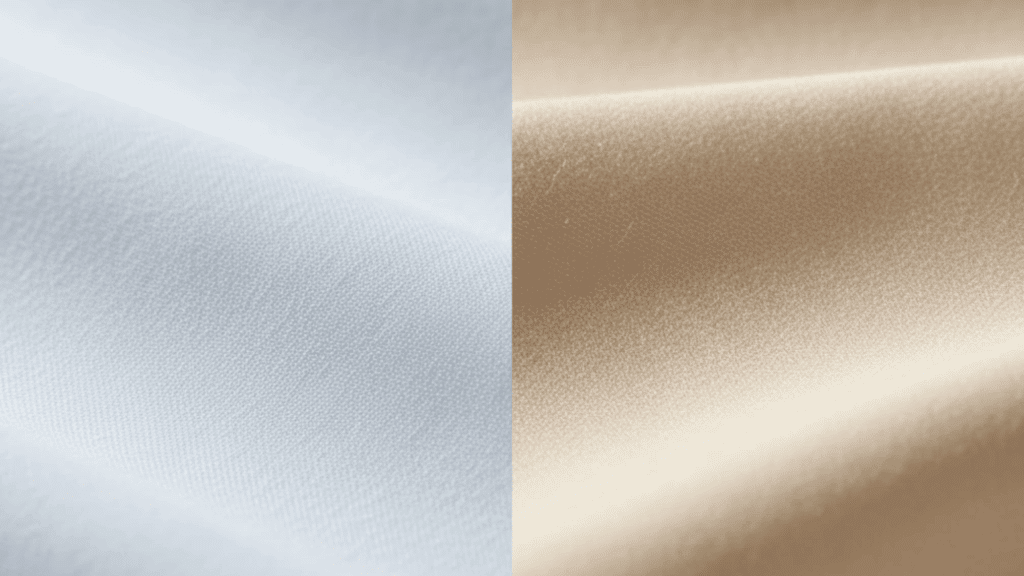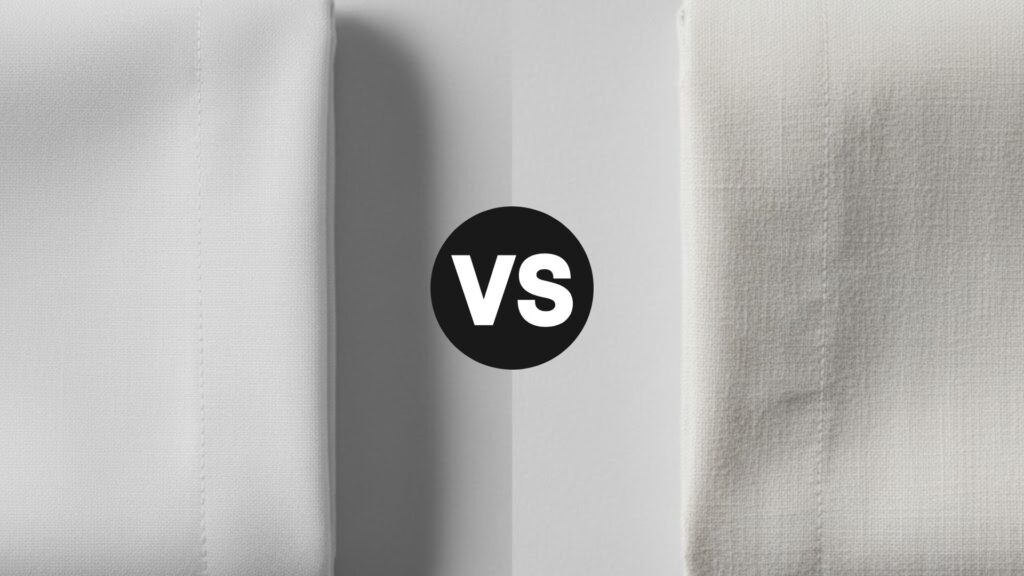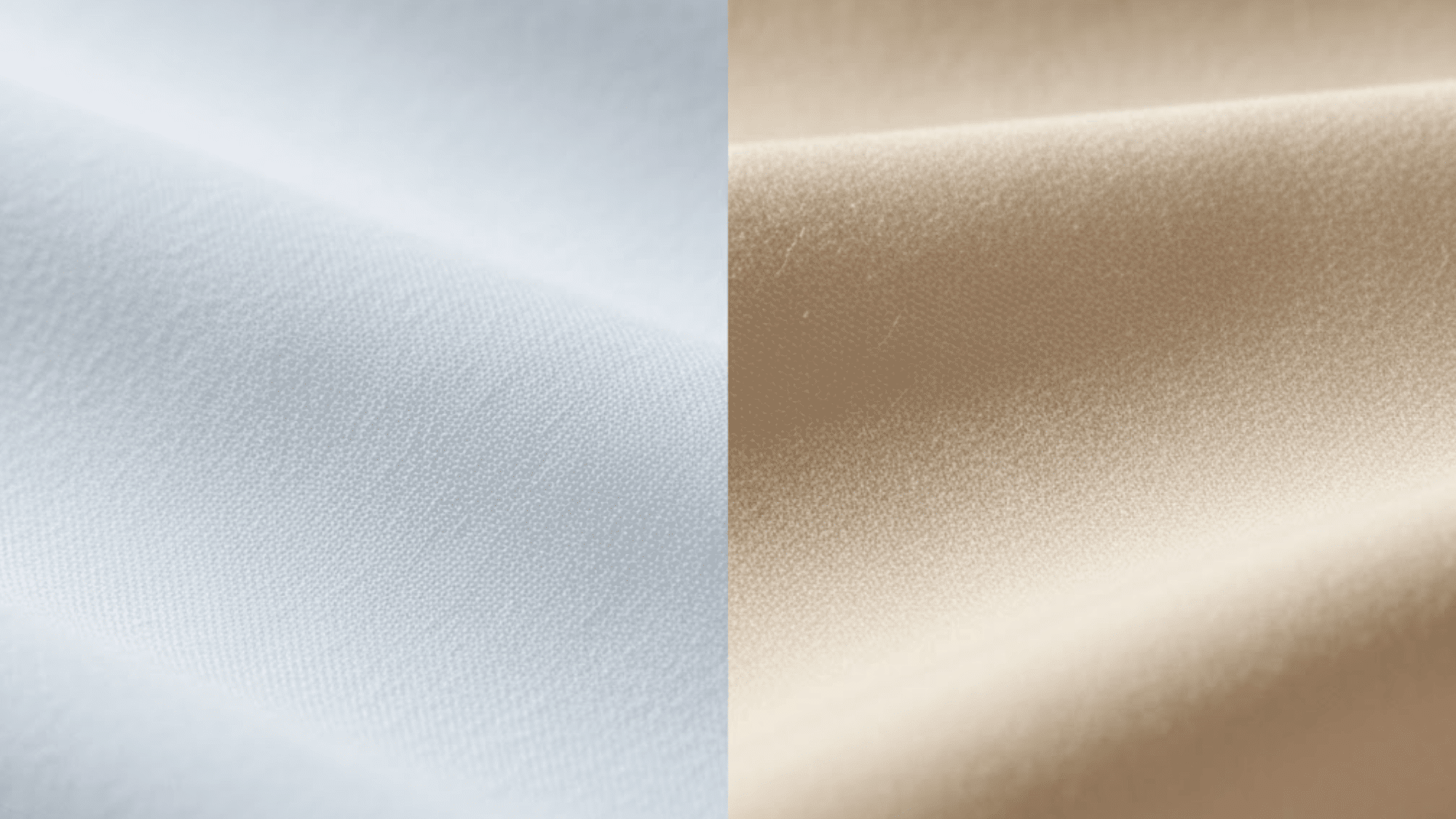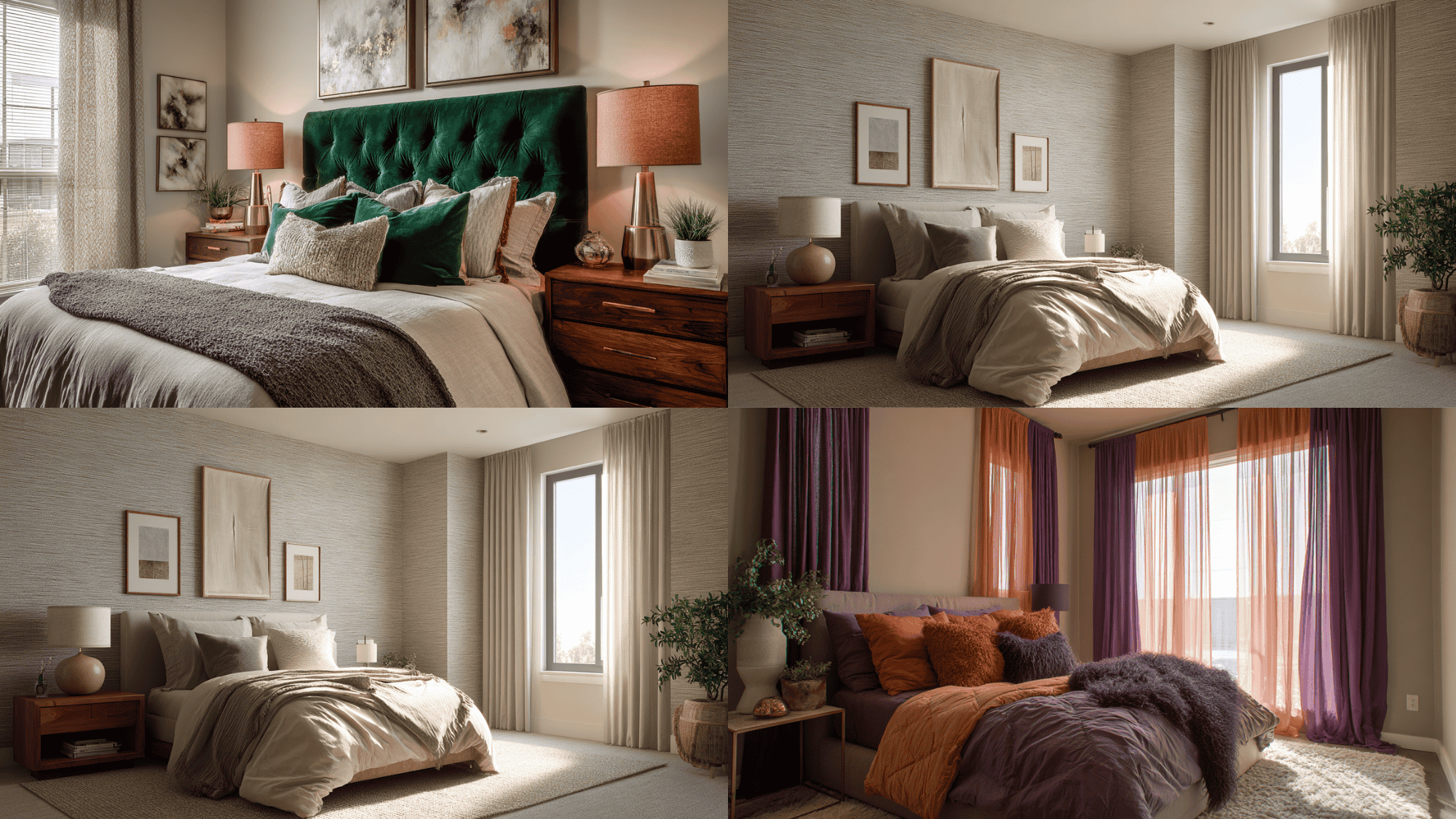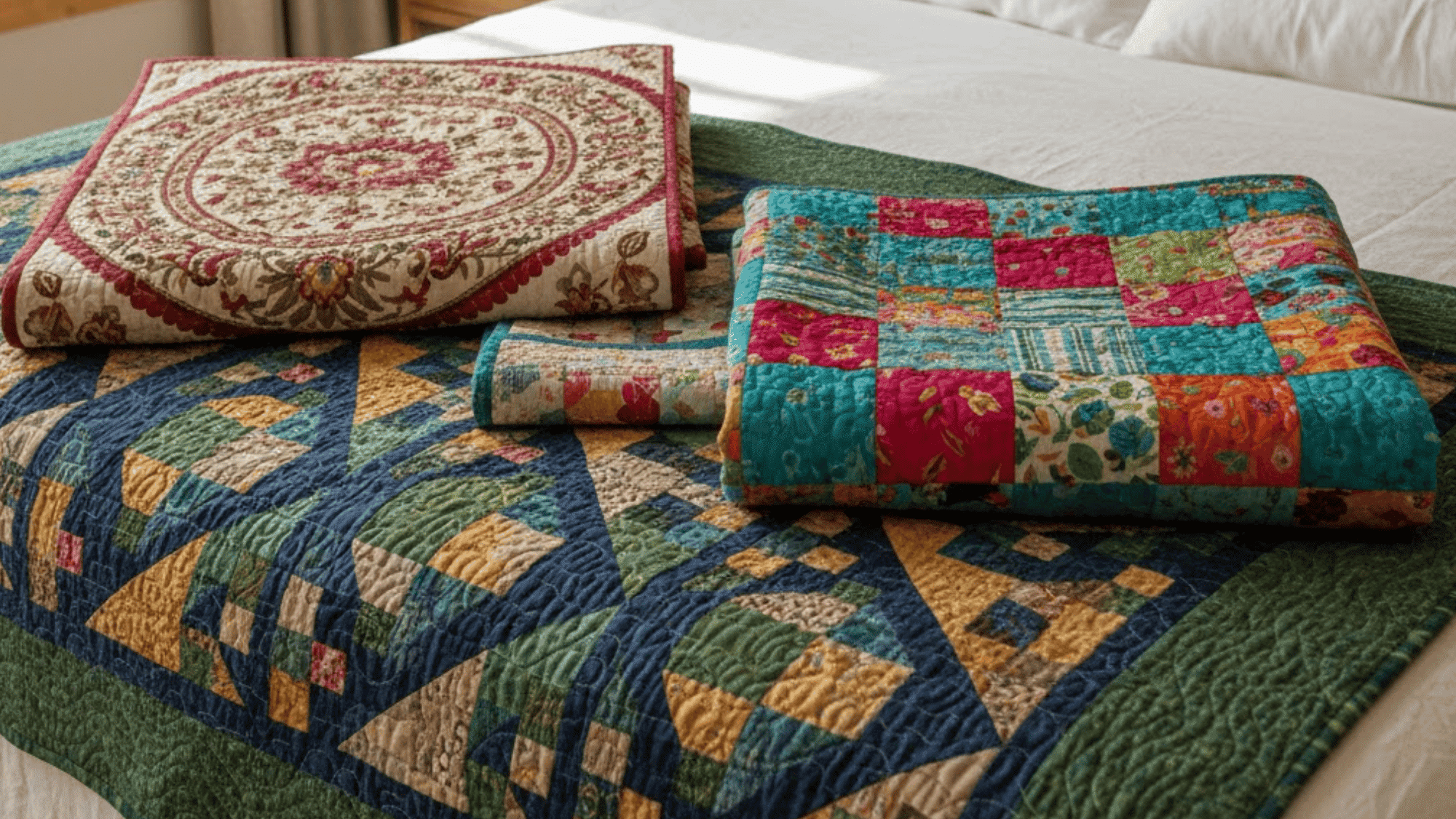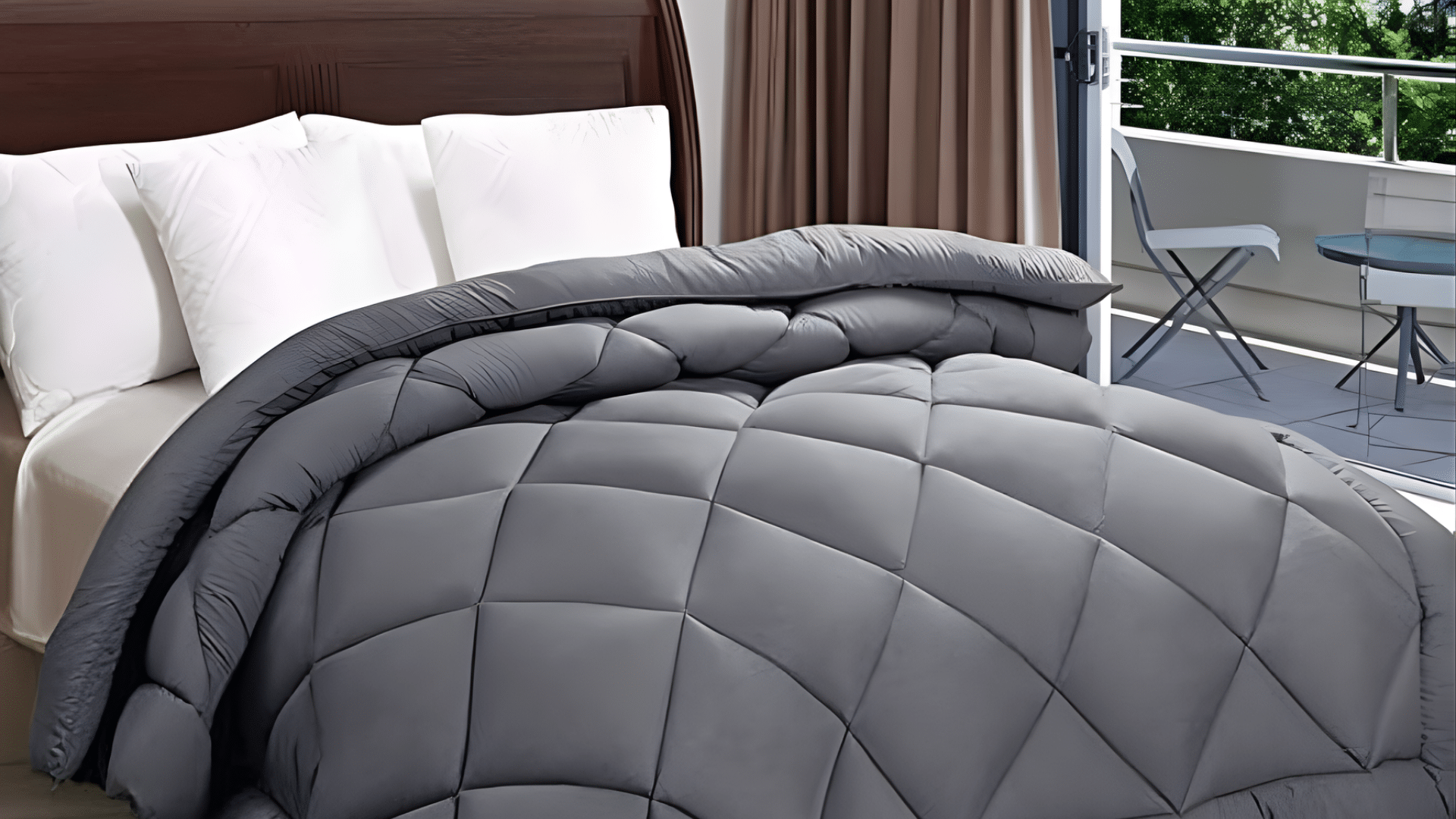I’ve always wondered why hotel beds feel so crisp and cool. It’s like magic, right? Turns out, the secret’s in the sheets!
If you’ve ever seen “percale” and “cotton” on bedding labels and thought they were totally different, you’re not alone. But here’s the twist: percale is cotton, it’s just woven in a special way that makes it feel smooth, fresh, and cool.
In this blog, I’ll explain what percale sheets are, how they differ from other cotton types, and which one is best for your sleep style.
We’ll also talk about thread count, care tips, and how to choose the perfect sheets for your dream bed.
The Science Behind Cool Sheets
So what makes some sheets feel cooler than others? It comes down to three key factors: fiber type, weave, and breathability.
Cotton, especially long-staple varieties, naturally absorbs and releases moisture, helping regulate body temperature.
The percale weave takes it up a notch with its tight, one-over-one-under pattern that allows air to flow freely. This prevents heat buildup and gives that crisp, fresh sensation when you slip into bed. It’s science you can actually feel!
What Are Percale Sheets Exactly?

Percale isn’t a type of fabric; it’s a weaving technique. Imagine a simple basket weave where one thread goes over, then under, then over, then under.
That’s percale! This one-over-one-under pattern creates a flat, crisp texture that feels cool against your skin.
When you touch percale sheets, they have a matte finish (no shine) and feel structured, almost like a freshly pressed dress shirt.
They’re the sheets luxury hotels love to use because they feel so clean and crisp. The best part? Percale sheets are super breathable, hypoallergenic, and they actually get softer and softer with every wash.
The ideal thread count for percale sheets is between 200 and 400. This sweet spot gives you the perfect balance of comfort and strength. Anything higher might feel too stiff, and anything lower could feel thin.
Want the premium version? Look for Egyptian cotton percale or Pima cotton percale. These long-staple cottons make the sheets even more luxurious and durable.
Understanding Cotton Sheets
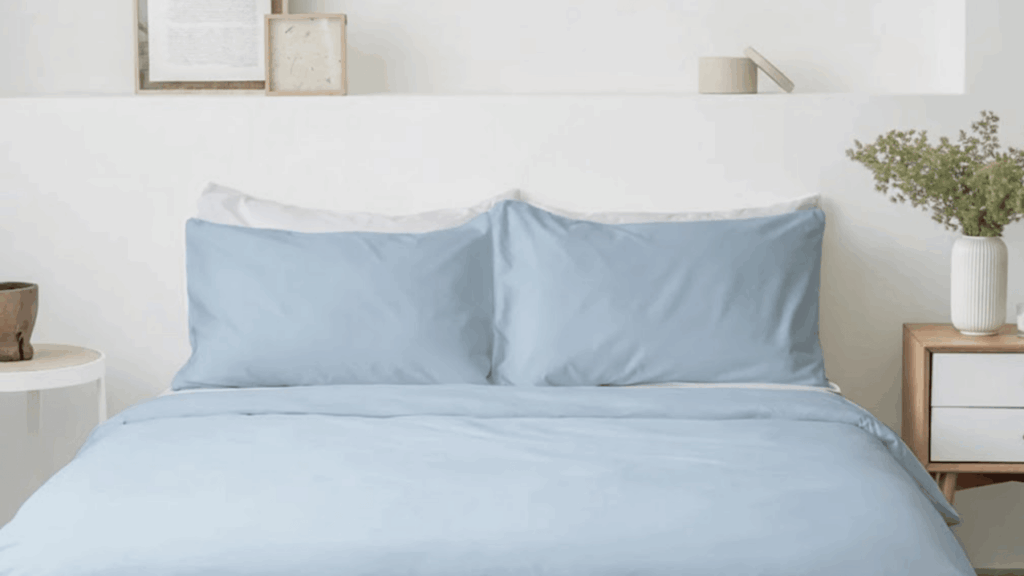
Here’s where it gets interesting. When someone says “cotton sheets,” they’re talking about sheets made from cotton fabric, but that cotton can be woven in many different ways. Percale is just one option.
Cotton sheets can also be:
- Sateen: Woven to create a silky, smooth surface with a slight sheen
- Twill: Creates diagonal patterns and feels medium-weight
- Flannel: Brushed for extra softness and warmth
- Jersey: Stretchy and soft like your favorite t-shirt
Cotton itself is valued for its natural softness, breathability, and feel against your skin. The type of cotton matters too.
Long-staple cottons like Egyptian cotton and Pima cotton are considered the highest quality because their longer fibers make a stronger, softer fabric.
So when comparing “percale vs cotton,” what most people really mean is comparing percale weave to other cotton weaves like sateen.
Percale vs Cotton: Key Differences
When it comes to choosing the perfect sheets, the main differences between percale and cotton weaves come down to texture, breathability, durability, and overall comfort.
1. Texture and Feel
- Percale: Feels crisp, cool, and structured, like sleeping on a cloud of fresh air. Think of a freshly pressed dress shirt against your skin.
- Cotton (Other Weaves): Sateen and other weaves feel soft, silky, and buttery smooth. It’s like wrapping yourself in a cozy, gentle embrace every night.
2. Breathability
- Percale: The tight one-over-one-under weave creates excellent airflow, keeping hot sleepers cool and comfortable throughout the entire night without overheating.
- Cotton (Other Weaves): Denser weaves like sateen can trap more body heat. Great for cold sleepers, but might feel too warm during summer months.
3. Durability
- Percale: Built to last for years thanks to the tight weave pattern. Gets stronger and softer with each wash, handling hundreds of laundry cycles.
- Cotton (Other Weaves): Durability varies widely depending on the weave type and cotton quality used. Some last years, while others wear out more quickly.
4. Maintenance
- Percale: Tends to wrinkle easily after washing, creating a relaxed, lived-in look. Many people love this natural appearance, and wrinkles disappear when sleeping.
- Cotton (Other Weaves): Sateen and other weaves resist wrinkles better and maintain a smoother appearance. Generally easier to care for with less ironing needed.
5. Price
- Percale: Usually costs slightly more because the precise weaving technique requires skilled craftsmanship and attention to detail during the manufacturing process.
- Cotton (Other Weaves): Available in all price ranges from budget-friendly to luxury options. Cost depends on cotton quality, weave type, and brand reputation.
6. Appearance
- Percale: Features a matte, structured finish that stays crisp on your bed. Creates a clean, hotel-quality look with no shine or sheen.
- Cotton (Other Weaves): Sateen and similar weaves have a glossy, draped appearance that flows elegantly. Looks more luxurious with a subtle, silky shine.
7. Climate Suitability
- Percale: Perfect for hot climates and warm sleepers. The breathable weave keeps you cool all night, especially during humid summer weather.
- Cotton (Other Weaves): Sateen and flannel provide extra warmth for cold sleepers. Ideal for cooler climates or chilly winter nights when coziness matters most.
Comparing Percale, Sateen, & Lyocell
Since we’re comparing, let’s throw in one more option that’s becoming super popular:
| Sheet Type | Feel | Best For | Special Features |
|---|---|---|---|
| Percale | Cool, crisp, breathable | Hot sleepers, summer | Hotel-quality crispness |
| Sateen | Silky, smooth, warmer | Cold sleepers, winter | Luxurious sheen |
| Lyocell (Tencel) | Smooth, moisture-wicking | Eco-conscious shoppers | Sustainable and soft |
Why Choose Percale Sheets?
There are some pretty awesome reasons why percale sheets might be perfect for your bed:
- Naturally Breathable and Moisture-Wicking: They pull heat and sweat away from your body, keeping you comfortable all night
- Perfect for Sensitive Skin: The natural cotton and tight weave are hypoallergenic and gentle
- Gets Better with Age: Unlike many things in life, percale sheets actually improve over time, becoming softer with each wash
- The Luxury Hotel Experience: Want to feel like you’re on vacation every night? Percale delivers that boutique hotel feeling
- Quality Certifications Matter: Look for Oeko-Tex certified sheets or high-quality Egyptian cotton to ensure you’re getting the real deal
Yes, they wrinkle easily, but think of it as part of their charm. Those natural wrinkles give your bedroom a relaxed, effortlessly elegant vibe.
Thread Count: Does It Really Matter?
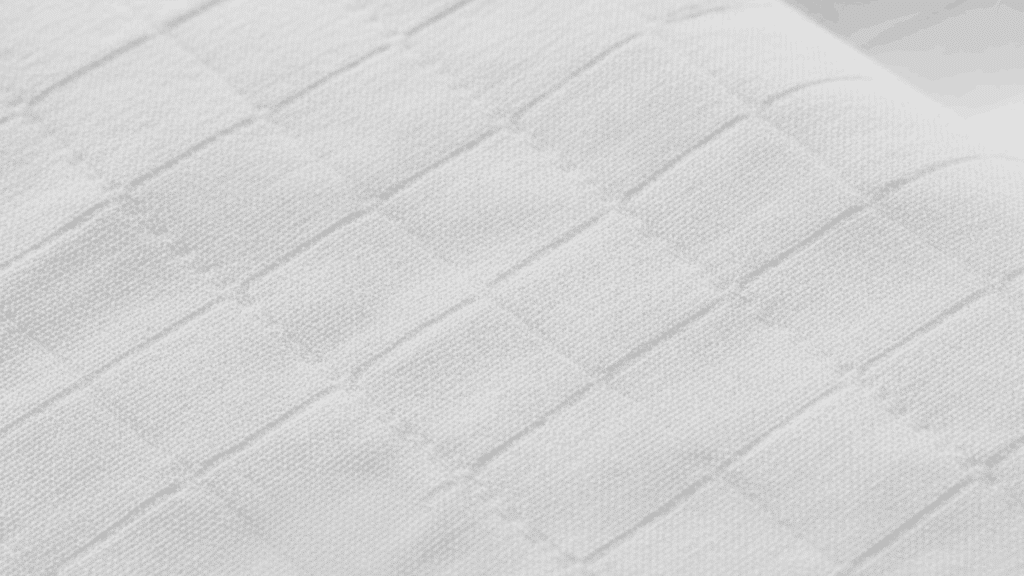
Let’s bust a common myth: higher thread count doesn’t always mean better sheets. For percale specifically, the sweet spot is 200-400 thread count. This range gives you the best balance of softness, breathability, and durability.
Here’s what happens outside that range:
- Over 600 Thread Count: The sheets get too stiff and heavy, losing that crisp, cool feel
- Below 180 Thread Count: The fabric becomes too thin and might not last as long
For sateen and other cotton weaves, thread count can vary more widely and still feel great. But remember—thread count is just one factor. The quality of the cotton and the weaving technique matter even more.
Taking Care of Your Sheets
Want your sheets to last for years? Here’s how to keep both percale and other cotton sheets in great shape:
| Category | Tips |
|---|---|
| Washing Tips | • Use cool to warm water (not hot) with a mild detergent • Avoid bleach unless absolutely necessary • Wash with similar colors to prevent fading |
| Drying Tips | • Skip the high heat because it can damage the fibers • Medium or low heat in the dryer works best • Line drying gives a wrinkle-free finish and saves energy |
| Optional but Nice | • Iron your percale sheets for an ultra-smooth hotel look • Fold them right out of the dryer to minimize wrinkles |
Which Sheets Should You Choose?
This is the million-dollar question, and the answer depends on what makes you comfortable.
Choose Percale Sheets if:
- You’re a hot sleeper who wakes up sweaty
- You love that crisp, hotel-quality feel
- You live in a warm climate or run hot at night
- You prefer a matte, structured look on your bed
- You don’t mind a few natural wrinkles
Choose Other Cotton Sheets (like Sateen) if:
- You prefer silky softness over crispness
- You get cold easily at night
- You want sheets that resist wrinkles
- You love a little shine and drape on your bed
- You live in a cooler climate
Here’s a helpful way to think about it: Percale is like your refreshing iced coffee on a summer morning, cool, crisp, and energizing.
Sateen is your cozy latte in winter, warm, smooth, and comforting. Both are amazing; they just serve different moods and needs.
The Bottom Line
After learning all this, I finally understand why percale sheets feel so special. They’re not some fancy new fabric; they’re just cotton woven in a way that makes them crisp, cool, and perfect for warm nights.
If you love that fresh, hotel-bed feeling, percale is a great pick. But if you prefer silky softness and warmth, sateen might be more your style.
At the end of the day, it’s all about what helps you sleep better. I like switching them up with the seasons, percale in summer and sateen in winter.
Ready to give your bed a comfort upgrade? Go ahead and find the sheets that make you look forward to bedtime every single night.


